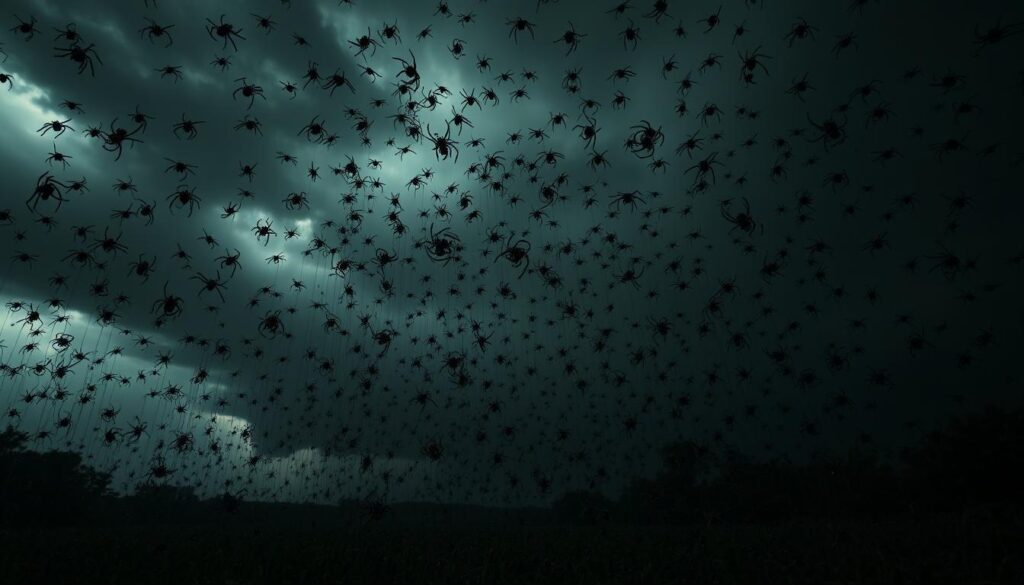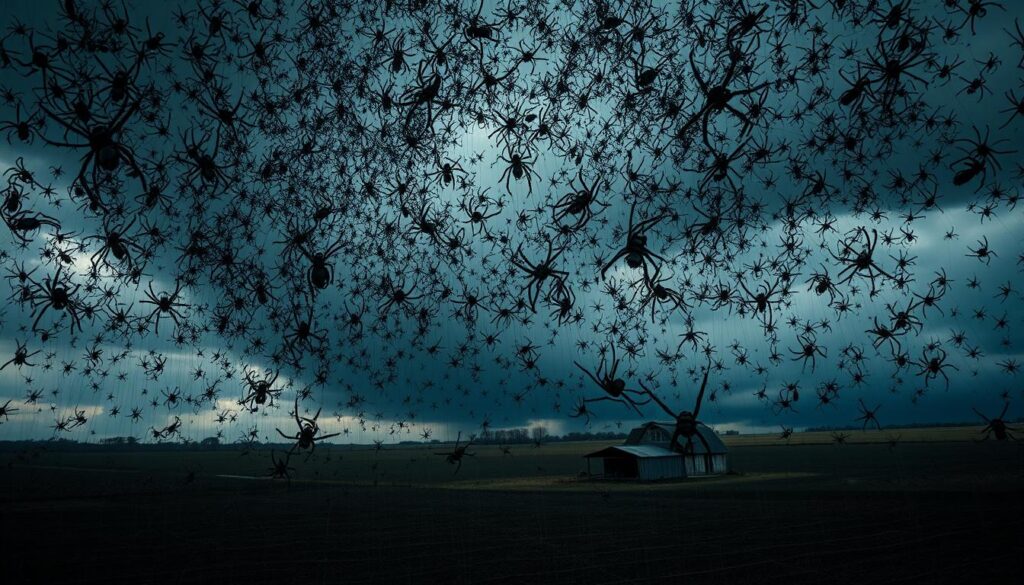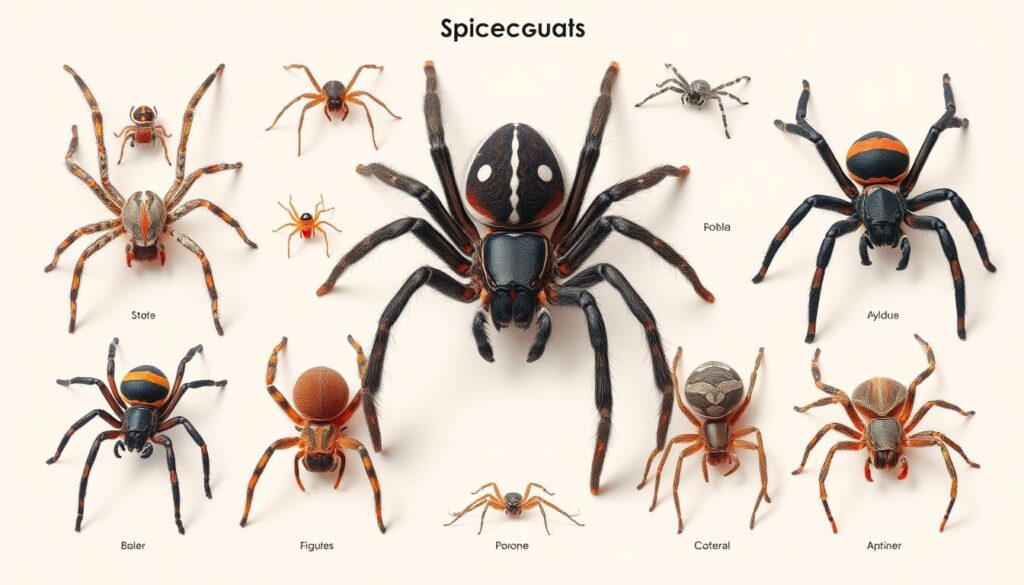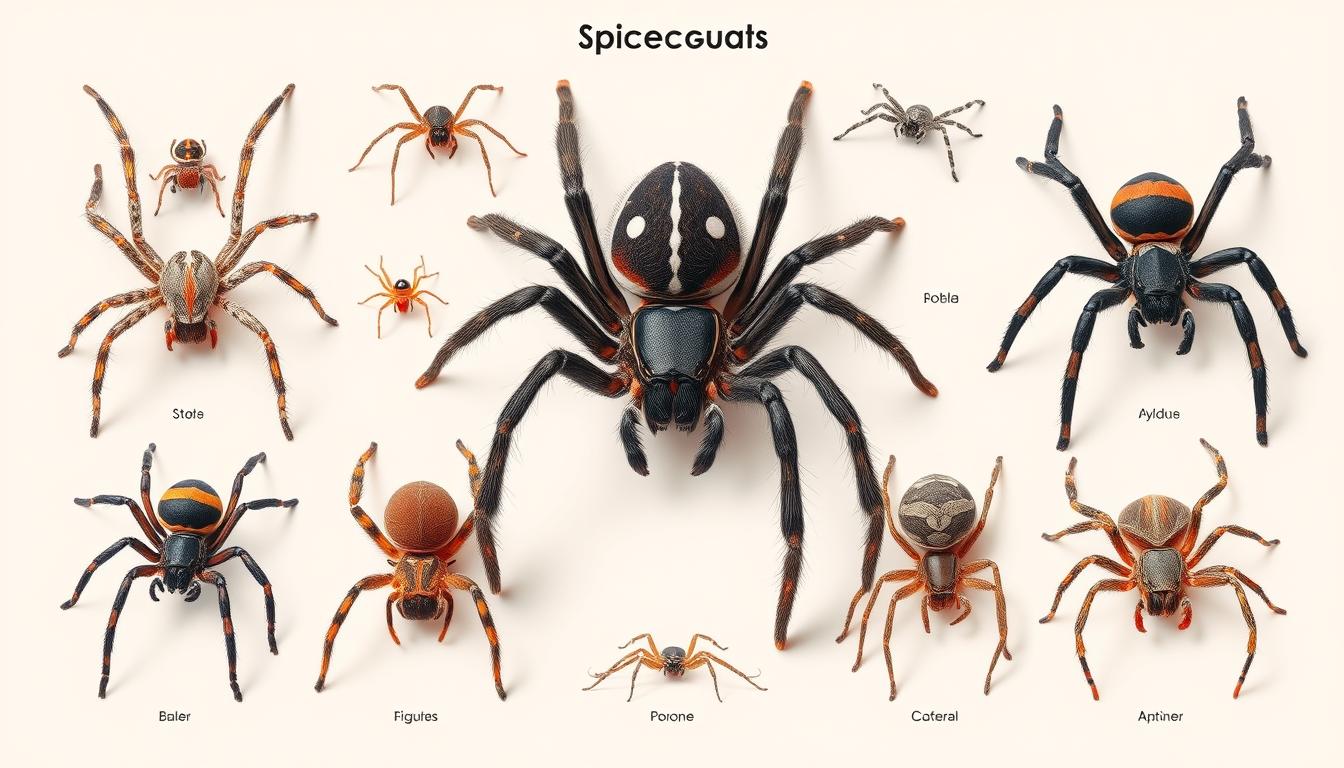Sky Raining Spiders might sound like a nightmare from a horror movie, but it’s real. People all over the world have seen skies darken with thousands of spiders falling. This has left many in shock.
From Australia’s outback to the Americas, these events are hard to believe. Yet, they are backed by science.

Imagine stepping outside to find the ground covered in silk strands. Tiny creatures are drifting down like living confetti. This isn’t just a story. Scientists say it happens when spiders fly naturally in large numbers.
The sudden appearance of so many spiders is a wonder of nature. It challenges our understanding of the world.
Key Takeaways Sky Raining Spiders
- Spider rain phenomenon occurs when wind carries spiders over long distances.
- Arachnid precipitation has been recorded on every continent except Antarctica.
- Most falling spiders are harmless, despite their alarming appearance.
- Modern science explains it as part of spider migration patterns.
- Witness accounts often mix fear with fascination about this rare event.
When the Sky Fills with Eight-Legged Creatures
Spider storms are rare but leave people amazed and scared. These events, where thousands of flying spiders fall like rain, challenge our understanding of nature. Let’s look into how these events are more than just stories.
First Documented Cases of Spider Rain
In 1869, Australia saw its first recorded spider storm. Farmers found fields covered in spiderlings after strong winds. Then, in 2018, Brazil’s Pantanal region experienced the same. Scientists proved it wasn’t just people’s imaginations but a real event caused by weather changes.
The Psychological Impact of Witnessing Spider Rain
“The first time I saw it, I thought the sky was crying spiders. It felt surreal,” said one survivor of a 2018 incident.
Seeing such events can make people feel scared and curious. The fear of the unknown and the sight of flying spiders can cause panic. But, people also find themselves fascinated by the science behind it. Studies show that these events make us feel both scared and curious at the same time.
Distinguishing Between Myth and Reality
Myths still surround these events. Let’s clear up the facts:
- Myth: Spiders fall from the sky like raindrops. Reality: They’re swept upward by thermals, not falling.
- Myth: Caused by supernatural forces. Reality: Wind patterns and migration drives the phenomenon.
- Myth: All incidents are dangerous. Reality: Most species in these storms are harmless to humans.
By separating myth from science, we learn about nature’s balance. Next, we’ll explore the science behind these aerial journeys.
The Science Behind Arachnid Precipitation
Spiders in the sky are a natural wonder. They are a mix of biology and weather. Let’s see how ballooning spiders fly and why they sometimes fall together.
Understanding Ballooning: How Spiders Take Flight
Young spiders and some types, like the Erigoninae, use silk threads to fly. They send silk into the air, which catches wind. This is called ballooning spiders and helps them move to new places.
Even without wind, electric fields in the sky can lift these threads. This sends them soaring up.
Weather Conditions That Trigger Spider Rain
Spider migrations happen when the weather is just right. Important factors include:
- Calm winds below 5 mph, creating stable launch conditions
- Low humidity to keep silk threads light and buoyant
- Temperature shifts between 60–75°F (15–24°C) that activate silk production
The Role of Thermal Currents in Spider Migration
Thermal updrafts are like invisible roads. Warm ground makes air rise, and spiders ride these currents for miles. When these currents weaken or meet cold fronts, spiders fall together.
This looks like rain but is actually spiders falling. Scientists say it’s like leaf-blowing winds but with silk threads guiding their flight.
Regions Most Prone to Spider Rainfall
Spider rain isn’t random—it happens where weather and geography align. Some places see more airborne arachnids than others, shaped by climate and landscape. Let’s look at where you’re most likely to spot this creepy phenomenon, Sky Raining Spiders.
- Australia’s Outback: Dry, open spaces and strong winds create perfect conditions. Massive spider migrations here are no myth.
- South American Grasslands: Countries like Argentina and Brazil report frequent falls, linked to seasonal storms and humidity.
- U.S. Southern States: Texas, Oklahoma, and the Southeast see events tied to warm fronts and thunderstorms that disrupt spider habitats.
Climate change might be shifting patterns. Rising temperatures and extreme weather anomalies could expand areas at risk. Scientists track how storms and heat waves push airborne arachnids into new regions. In 2023, Texas reported its third major incident in five years, matching increased regional droughts. Brazil’s Pantanal wetlands also show rising numbers during rainy seasons, with locals calling it “aracnídeo chuva.”
Coastal zones and valleys are hotspots too. Mountain ranges like the Andes create air currents that carry spiders long distances. Farmers in South America often find silk threads clinging to crops after storms—a sign of incoming airborne arachnids.
While rare in northern states, experts warn that warming trends could alter traditional migration paths. Stay informed if you live in a warm, storm-prone area—these critters might soon be closer than you think – Sky Raining Spiders
Notable Historical Incidents Around the World
Sky Raining Spiders – Spider rains have made a big impact globally. They have been seen in Australia’s skies and in quiet European villages. These unusual weather events show us how unpredictable nature can be. Let’s look at some of the most interesting cases of biological precipitation in history.

| Location | Year | Details | Species Involved |
|---|---|---|---|
| Australia | 2015 | Goulburn saw millions of spiders descending, coating the ground in silk. | Linyphiidae |
| USA | 2018 | Texans witnessed a sudden rain of spiders after strong winds swept through grasslands. | Agelenidae |
| France | 1734 | Early records noted “tiny spiders falling like dust” in rural areas. | Various |
| Japan | 2020 | A coastal town documented a mass descent linked to typhoon winds. | Araneidae |
Australia’s Most Dramatic Spider Rain Events
In 2015, Goulburn’s skies were filled with millions of Linyphiidae spiders. People said it felt like walking on clouds of silk. Scientists called it a rare biological precipitation event caused by wind, Sky Raining Spiders.
Footage showed spider silk covering highways and homes.
North American Occurrences
- 2018 Texas: Winds swept up Agelenidae spiders, creating a “webbed fog” reported statewide.
- Arkansas (2021): A study linked seasonal storms to localized spider rains.
European and Asian Documentation
Europe’s oldest account is from 1734 France. Villagers said tiny creatures fell like snowflakes. In 2020, Japan’s Okinawa region saw a similar event after a typhoon, Sky Raining Spiders.
These incidents show how unusual weather events can cause mass migrations. They mix myth and science, Sky Raining Spiders.
The Ecological Significance of Airborne Arachnids
Spider migration is more than just a weird sight—it’s crucial for ecosystems. These aerial travels help species survive and adapt. They balance nature in ways we’re still learning about – Sky Raining Spiders
Population Control and Distribution
- Spiders migrate to avoid overcrowding, ensuring no single area becomes overpopulated.
- By spreading to new habitats, they maintain genetic diversity, strengthening survival chances for future generations.
Impact on Local Ecosystems
Sky Raining Spiders brings both good and bad. They control pest populations like mosquitoes and insects that harm crops. But, sudden increases can upset food webs:
- More spiders might reduce prey, changing how predators hunt.
- New species can outcompete native spiders, changing local biodiversity.
Seeing spider migration as nature’s adaptation helps us understand its importance. Next time you see a spider flying, remember: it’s not just escaping. It’s helping ecosystems thrive, Sky Raining Spiders.
Are All Falling Spiders Dangerous?
Most spiders caught in “spider rains” are harmless to humans. Many are young or small, like money spiders. They use silk threads to travel long distances. These tiny spiders can’t bite hard enough to hurt us.

“Ballooning spiders are nature’s aeronauts, but their survival tactics don’t mean danger for people,” says Dr. Emily Carter, arachnologist at the National Arachnid Research Institute.
But, venomous spiders like black widows or brown recluses might show up sometimes. Spider species identification is crucial. If you see a spider rain, don’t touch unknown spiders. Use field guides or apps like iNaturalist to identify them.
| Common Species | Venomous Species |
|---|---|
| Money spider (Aloidramas spp.) | Black widow (Latrodectus mactans) |
| Sheet web weavers (Linyphiidae) | Brown recluse (Loxosceles reclusa) |
| Cellar spiders (Pholcus phalangioides) | Hobo spider (Tegenaria agrestis) |
If you see big spiders with unique marks, like hourglass red or violin shapes, be careful. Always identify the spider first. Most spiders are not aggressive, but knowing them helps. Stay calm, take photos, and call local wildlife hotlines for advice, Sky Raining Spiders.
Spider Rain Versus Other Unusual Weather Phenomena
Animal rain has fascinated people for centuries. It includes everything from fish showers to frogs falling during storms. Spider rain is just one part of this strange yet real world of weather.
Animal Rain Throughout History
Animal rain has been documented for ages. In 1794, a French scientist saw fish falling near London. Today, we have frogs in India and worms in Kentucky. These events often cause panic, but science is starting to understand them, Sky Raining Spiders.
Comparing Different Types of Biological Precipitation
What makes spider rain special? Unlike fish or birds, spiders use wind to travel. Other animal falls usually happen when strong storms pick them up. Here’s a comparison:
- Spider Rain: High-altitude winds carry ballooning spiders.
- Fish Rain: Tornado-like vortexes pick up water life from ponds.
- Bird Rain: Severe storms scatter birds that are already on the ground.
Though they differ, all are connected by powerful weather. Next time you see spiders falling, remember nature’s endless creativity.
How to Respond If You Experience Spider Rain
Stay calm if you see spider rain. Follow these steps to stay safe and help scientists:
Safety Precautions to Take – Sky Raining Spiders
- Wear long sleeves and pants to protect your skin.
- Avoid touching spiders directly—use gloves if needed.
- Close windows and doors to keep spiders out.
spider rain safety also means cleaning surfaces to remove spiders.
Documenting the Phenomenon Safely
Help with spider rain documentation by:
- Photographing from a safe distance.
- Recording time, date, and location in journals or apps like iNaturalist.
- Reporting to local universities or the National Science Foundation.
When to Seek Shelter
Go inside if:
| Situation | Action |
|---|---|
| Spiders enter your home | Seal entry points and use vacuum cleaners cautiously |
| Severe allergies or bites occur | Seek medical help promptly |
“Observations matter! Even small reports help researchers track patterns.” – Dr. Emily Torres, Arachnologist
Separating Facts from Fiction About Spider Storms
Stories of spider rain myths often mix truth with exaggeration. While it’s true spiders can move together, many online stories are not real. Videos called “spider storms” might show moths or other things, not spiders, Sky Raining Spiders.
Pop culture and social media add to the confusion. Movies and headlines sometimes show “plagues” that don’t make sense. But, real arachnid fact-checking shows spiders move with the wind, not in storms, Sky Raining Spiders.
Be curious but also be careful. Verified cases show spiders move with the wind, not in rain. Before sharing a story, check for studies or reports from experts. The real wonder of spiders is in their biology, not myths. Knowing the science keeps things interesting and safe.
FAQ
What causes spider rain to occur?
Spider rain happens when spiders release silk threads into the air. These threads catch the wind and carry the spiders away. It usually happens when it’s warm and there are rising air currents.
Are all spiders involved in spider rain harmful to humans?
Most spiders in spider rain are young or small and not harmful. But, sometimes bigger spiders might be involved. It’s important to know what kind of spiders you see.
Where are spider rain events most commonly reported?
Spider rain is seen in places with good weather, like parts of Australia and South America. In the U.S., it happens in certain areas too. The landscape and how many spiders there are also matter.
Can spider rain trigger psychological reactions?
Yes! Seeing spider rain can make people feel amazed, scared, or unsure. It’s because our brains react to things that are unexpected and unusual. How we feel about it also depends on what we think about spiders.
What is the ecological significance of spider rain?
Spider rain helps keep ecosystems balanced. It lets spiders spread out, keep their genes diverse, and control other populations. The sudden arrival of spiders can also change local ecosystems in many ways.
How can I safely document a spider rain event?
If you see spider rain, take photos from far away. Don’t touch the spiders to avoid getting bitten. Write down the date, time, where it happened, and what you saw. This helps scientists learn more.
What other unusual weather phenomena are similar to spider rain?
Spider rain is like other weird weather events, like rain of fish or frogs. These seem strange but usually have the same reasons behind them. It’s all about the weather and how air moves.
Source
https://www.todayifoundout.com/index.php/2018/01/bizarre-terrifying-phenomenon-spider-rain/?utm
